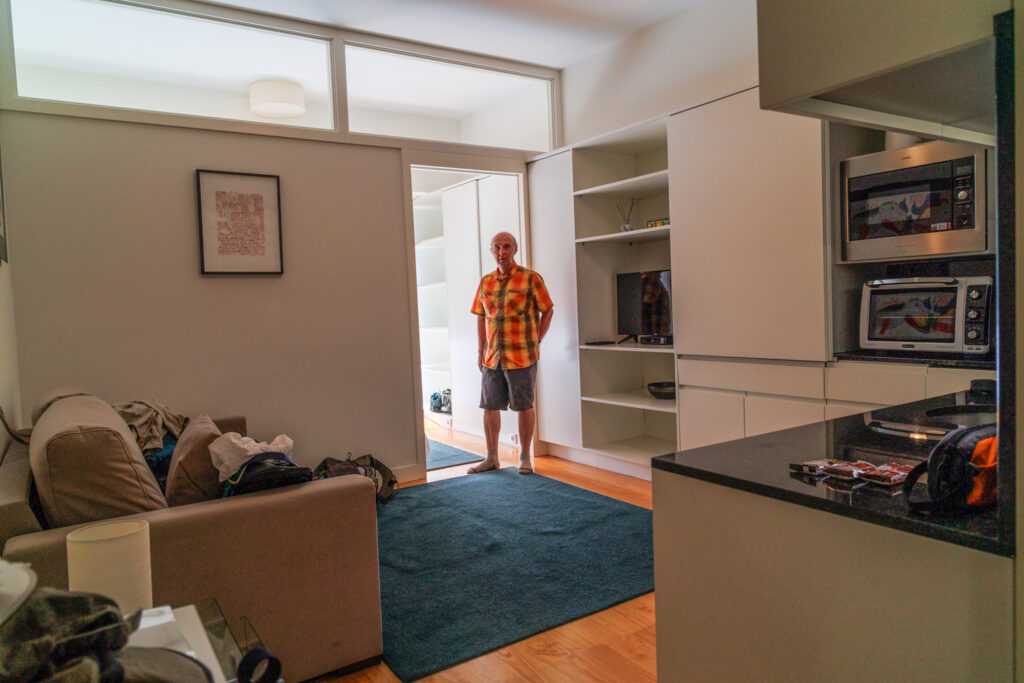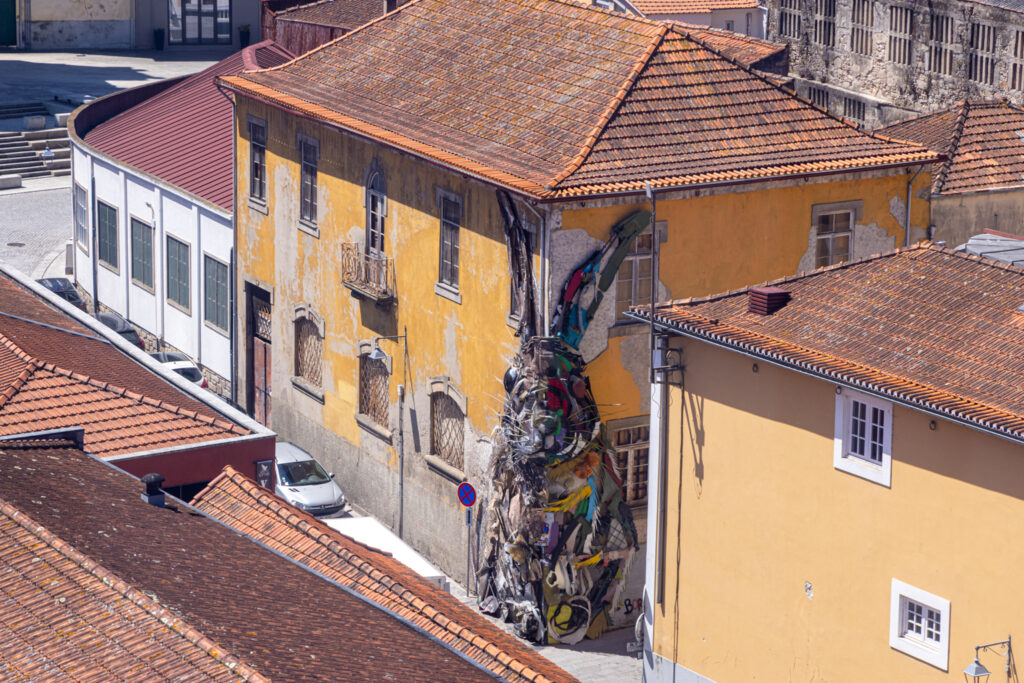Our Porto apartment, on Rua do Almada, had big glass doors at the back, overlooking gardens and backs of apartments and restaurants on the parallel street. It was a fairly open view and by opening the door, and relying on the railing to keep us in, we could check the weather and look at birds in the gardens below. Gulls and swifts were always flying around and above us. Across the way, on the red-tiled roof, there were two baby seagulls stumbling about and getting fed by their parents.

Our plan today was to cross the Ponte de D. Luis I, a metal bridge arching high over the river, and visit Vila Nova de Gaia on the other shore. We walked down Avenida dos Aliados, then past São Bento train station and Porto Cathedral, to the bridge. The bridge has sidewalks and middle lanes for the metro trains. You can walk down the middle and cross sides freely, but watch out for the trains! There is also a lower deck, for cars, near the level of the river. It appeared to be under construction.

There were great views from the bridge — gardens on the steep slopes below us, lots of fish hovering in the current, and the city buildings on the steep riverbanks. We visited the Jardim do Morro at the end of the bridge on the Gaia side, which didn’t seem as interesting as pictures we had seen. Its stone grotto should have been picturesque, but a pool of water there smelled pretty bad.

At the railing overlooking the river, we chatted with some Scottish tourists who now live in Switzerland. We lamented the state of politics and war in the world. It was sad to have them say they felt sorry for us in United States, in the wake of the mass shootings that had happened in May and June.
We went down some steep streets to get to the bottom of the bridge pediment. There was supposed to be some interesting shops there, but instead we appreciated the homes clinging to the steep cliff. It’s a good thing they don’t have icy winters. The streets are treacherous enough — narrow, hairpin curves, and very steep.
We climbed back up to ride the gondola that started in the Jardim do Morro. We were already making plans to conserve our walking energy, so we bought a round-trip ticket. They took our picture as the gondola departed, like a good tourist operation, and David took the photographer’s picture in return. They didn’t make an effort to sell us the picture later though. What did they plan to do with all the photos? I guess they politely expected us to request them if we wanted them.

From the gondola, we saw a wonderful, big rabbit sculpture built against a wall, made of junk and found objects. It had to be the same artist that made the raccoon sculpture in Lisboa, at a museum near the Jeronimos monastery.
We had lunch at Casa Adão and finally had a satisfying amount of vegetables. David ordered a tomato salad, which was a mix of tomatoes and greens. Pam ordered a traditional soup, caldo verde, which is a thick bean broth with shredded kale, and a pepper salad, which was roasted green peppers with plenty of olive oil. The two salads mixed nicely.
On the Gaia shore, there was a market with tourist items, which we ignored. At some shops, especially in Lisboa, shopkeepers had a pushy selling style that reminded us of India. It gets wearing to have to keep saying no. After wandering around a bit and appreciating the river and the historic boats, we took the gondola back to the bridge.
On the other side, we got a Porto and metro card. Then we visited Porto Cathedral (Sé do Porto) and climbed the tower for some great views. We could check out the apartment buildings to which ones we might like. There are so many churches in Portuguese cities that they have started to blend in my mind. Good thing we have our own pictures to remember which ones we actually visited!
